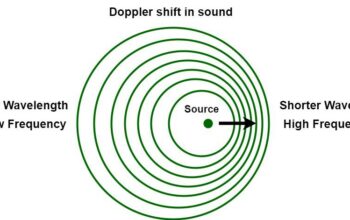In the realm of modern physics and quantum mechanics, the manipulation of time has long been the subject of intense study and fascination. Recent breakthroughs have ushered in the prospect of optical clocks becoming instrumental not only in precision timekeeping but also in telecommunications. The transition of optical clock signals over substantial distances—specifically, achieving a transmission over 1,000 kilometers—has highlighted the capabilities inherent in these cutting-edge devices and their implications for scientific inquiry and technological advancement.
Optical clocks utilize the vibrations of light to measure time with extraordinary precision, far surpassing the capabilities of their atomic counterparts. At their core, these clocks revolve around the principles of quantum mechanics. The basic functioning of an optical clock is predicated on the oscillations of light-derived resonances within atomic or molecular systems. For instance, atoms such as strontium or ytterbium have been utilized due to their favorable properties, allowing for resultant frequencies in the optical spectrum that are significantly higher than those associated with traditional atomic clocks. These resonances can be exploited to achieve timing accuracy with discrepancies of merely a few seconds over billions of years.
The ability to send optical clock signals over vast distances raises pertinent questions and offers unprecedented opportunities in various fields, including global positioning, navigation systems, and fundamental physics experiments. Recent experimental endeavors have demonstrated the feasibility of transmitting optical signals over fiber optic networks, capitalizing on the low-loss characteristics of such media. This endeavor requires overcoming several technical challenges, notably those associated with maintaining signal integrity and mitigating noise that can introduce timing errors.
Signal degradation becomes a principal obstacle when dealing with long-distance transmission. As such, the implementation of sophisticated modulation techniques is essential for preserving the fidelity of the optical clock signal. Researchers have developed advanced encoding methods, such as coherent frequency comb techniques, which facilitate the transfer of high-stability optical frequencies through optical fibers, thereby minimizing the loss of essential data during transmission. This modulation enhances the robustness of the signals and enables them to traverse extensive distances without succumbing to degradation that could jeopardize the precision of the timing measurements.
Moreover, the advent of quantum repeaters represents a transformative capability. These devices can amplify optical signals while simultaneously preserving the quantum state, thereby allowing for the extension of transmission distances beyond the classical limitations. Such advancements are pivotal in enabling the establishment of a global network of synchronized optical clocks, which could dramatically improve the accuracy of global positioning systems and provide a more refined understanding of geophysical processes.
In addition to practical applications, the transmission of optical clock signals over long distances offers profound implications for the foundational aspects of physics. Precision in timekeeping has broad ramifications, particularly in testing fundamental theories, including general relativity. The comparative timing of distant optical clocks can illuminate potential discrepancies in spacetime, furthering our understanding of gravitational waves or questions arising from quantum entanglement over macroscopic distances.
Furthermore, the intersection of optical clocks and quantum information science is equally remarkable. Quantum networks relying on such timing systems promise enhanced security measures through quantum key distribution protocols. By synchronizing optical clocks across the network, researchers can establish a framework for secure communication channels, leveraging entangled states to preclude eavesdropping attempts and enhance cryptographic strength.
As optical clocks become more accessible and their transmissions more reliable, we are likely to observe a paradigm shift in not only how we perceive time but also how we engage with various technological systems reliant on meticulous temporal measurements. Imagine a world where transportation systems operate on unerring timing dictated by synchronized optical clocks, allowing for unprecedented safety and efficiency. The refinement of financial transactions through precise temporal stamps may also provide firms with the critical edge necessary to compete in rapidly evolving markets.
The fascinating study of optical clock signal transmission continues to evolve, revealing new avenues for exploration and technological applications. As researchers delve deeper into this domain, they will undoubtedly encounter both new challenges and opportunities, prompting further curiosity and investigation. The pursuit of pushing the boundaries of what is conceivable, coupled with existing innovations, catalyzes an exhilarating convergence of physics and engineering that ultimately reshapes our understanding of time as a concept and a measurable entity.
In conclusion, the transmission of optical clock signals over extensive distances acts as a linchpin in the advancement of metrology and quantum mechanics. With meticulous craftsmanship, researchers strive to unlock the full potential of these high-precision timekeeping devices, paving the way for transformative impacts on science, technology, and the fabric of time itself. As we stand on the precipice of these revolutionary changes, the possibilities of what lies ahead are boundless, urging further inquiry and exploration into the enigmatic yet critical nature of time.










